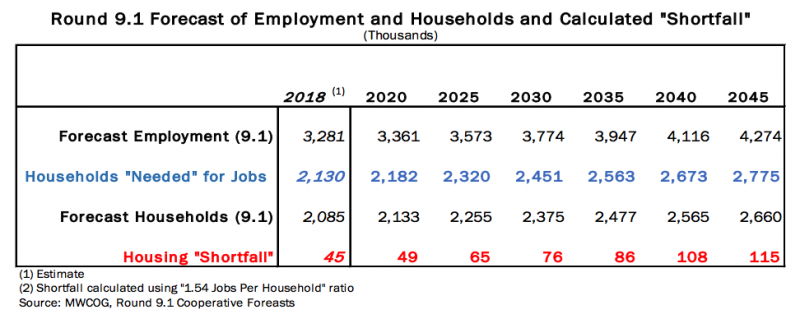We need 100,000+ new homes in the coming decades to meet our regional shortage

New views of H Street NE by Ted Eytan licensed under Creative Commons.
As the second round of debate on DC’s Comprehensive Plan draws near, the Metropolitan Washington Council of Governments (COG) has released a report highlighting exactly how much new housing the region needs in the coming decades: 115,000 additional homes above current projections by 2045, or about 25,600 total new units per year.
“There is a growing consensus that, particularly from an economic competitiveness perspective, the region’s elected, business, and non-profit leaders must act to ensure a sufficient supply of affordably priced housing for current residents, and for the workers needed to fill the new jobs anticipated in the future,” the report states.
Right now employment growth is outpacing housing growth, and the housing gap will worsten without intervention. The Washington region’s affordability problem is already quite clear, and COG concludes that without these additional homes, the region’s economic competitiveness will suffer and quality of life will decline.
The additional 115,000 housing units we need works out to about 20% more units than the report believes would otherwise be built. On an annual basis this amounts to about 25,600 new units per year, so while this goal is ambitious, it should also be achievable.
“To attain the short- and long-term housing needs noted earlier, the region would need a sustained annual housing production of at least 25,600 units per year,” the report states. “During 2017, more than 23,500 units were approved. Although we are on the right trajectory, it is possible to produce even more.”
This means we were just about 2,000 units short in 2017 of the report's recommendation, so MWCOG's target is within reach. Prior to the late 2000s housing crisis, we were building more than 30,000 units per year.
Between 2000 and 2005, new housing construction permits in the region averaged 30,900 units per year. Graphic from COG report. 
The regional transportation network is already strained from workers driving from cheaper, far away areas. Accordingly, new housing needs to go into existing neighborhoods, especially around high-capacity transit corridors, so residents can make use of existing transit lines and drive less.
The report recommends facilitating new units of all types of housing, ranging from rentals to owner units, and single family houses to townhomes. It also emphasizes the need to identify zoning rules that add new affordable units and preserve existing housing – something that should be particularly important in the Comprehensive Plan revision. Adequate homes for new workers will reduce pressure on existing residents.
“It is important to note again that this goal of increasing housing production by slightly more than 100,000 units is to ensure a sufficient supply of housing for workers to fill current and anticipated jobs,” the report states. “The focus will also be on creating housing in places that ensure inclusive communities, so that the benefits of economic growth are shared by all.”


